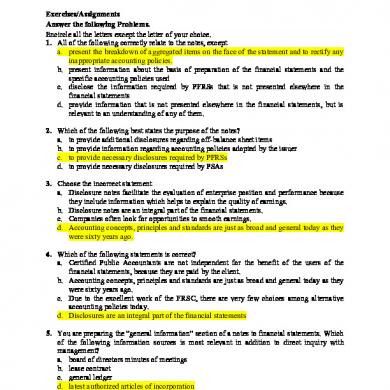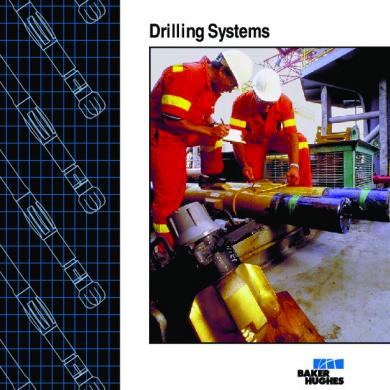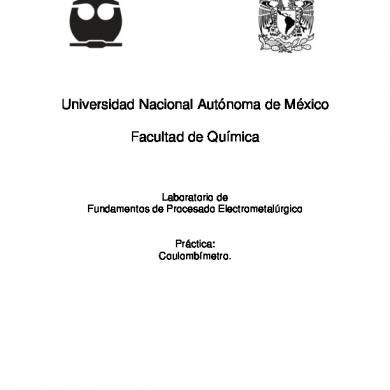Drrr - Q2 - Week 3
This document was uploaded by user and they confirmed that they have the permission to share it. If you are author or own the copyright of this book, please report to us by using this DMCA report form. Report DMCA
Overview
Download & View Drrr - Q2 - Week 3 as PDF for free.
More details
- Words: 1,732
- Pages: 16
Loading documents preview...
WEEKLY LEARNING ACTIVITY SHEETS Disaster Readiness and Risk Reduction & Grade 12, Quarter 3, Week 3 Hydrometeorological Hazards Name: ___________________________________________
Section: ____________________
MELCS: a. Recognize signs of impending hydrometeorological hazards DRR11/12-IIc-d-33 b. Interpret different hydrometeorological hazard maps DRR11/12-IIc-d-35 c. Use available tools for monitoring hydrometeorological hazards. DRR11/12-IIc-d36 Learning Objectives: At the end of the lesson, the learners will be able to: a. Know the signs of impending hydrometeorological hazards; and b. explains different hydrometeorological hazard maps; and c.apply available tools for monitoring hydrometeorological hazards Time Allotment: 4 days Key Concepts I.
WHAT ARE HYDROMETEOROLOGICAL HAZARDS? First let’s dissect the words and explain their definition:
•
Hydrometeorology: it’s a branch of meteorology and hydrology that studies the transfer of water and energy between the land surface and the lower atmosphere.
•
Hazard: any source that can cause harm or damage to humans, property or the environment. Therefore, Hydro meteorological hazard is a “Process or phenomenon of atmospheric, hydrological or oceanographic nature that may cause loss of life, injury or other health impacts, property damage, loss of livelihoods and services, social and economic disruption, or environmental damage”.
There are different Hydro-meteorological hazards occur in the world. Some of these are tropical cyclones, thunderstorms, hailstorm, tornado, blizzards, heavy snowfall, avalanches, coastal storm surges, drought, heat waves, and cold spells.
Author: Roy J. Dolera School/Station: Jose Sanvictores Sr. National School Division: Surigao del Sur Division email address: roy. [email protected]
II.
Hydrometeorological hazards in the Philippines HYDROMETEOROLOGICAL HAZARDS IN THE PHILIPPINES TYPHOON It is an extremely large and destructive storm that occurs especially in the region of the Philippines or the China Sea. Signs Increase ocean swell Barometric Pressure Drop Wind Speed Heavy Rainfall
Thunderstorm It is a weather condition generally characterize by heavy rain, thunder, lightning and even the possibility of tornado. Signs 1. Cloud Formation Darkening Sky 2. Lightning Wind 3. Wind
Flashflood/Flood It is a local flood of short duration generally resulting from heavy rainfall in the immediate vicinity. Signs 1.Continuous storms, typhoons and rain 2.Distant Thunder 3.Rapidly Rising water 4.Muddy Water 5.Water carry twigs, logs and other debris
Author: Roy J. Dolera School/Station: Jose Sanvictores Sr. National School Division: Surigao del Sur Division email address: roy. [email protected]
Storm Surge It is an escalating seawater to the coast above normal sea level. Signs Cumulu-nimbus Darker sky Low pressure Strong Winds Rising of Seawater
El Nino El Niño is a climate phenomenon that occurs when a vast pool of water in the eastern tropical Pacific Ocean becomes abnormally warm. Under normal conditions, the warm water and the rains it drives are in the western Pacific Signs: Hot Weather High pressure Change in temperature Gradually Drying of land
La Nina La Niña is a weather pattern that occurs in the Pacific Ocean. In this pattern, strong winds blow warm water at the ocean’s surface from South America to Indonesia. As the warm water moves west, cold water from the deep rises to the surface near the coast of South America. Sign: Cooling of sea surface temperatures in the tropical Pacific, which occurs roughly every three to five years, lasting from six to 24 months
Author: Roy J. Dolera School/Station: Jose Sanvictores Sr. National School Division: Surigao del Sur Division email address: roy. [email protected]
III.
Hydrometeorological Hazard Maps
https://carmelaochea.wordpress.com/2018/01/24/hydrometeorological-hazard-maps/
Author: Roy J. Dolera School/Station: Jose Sanvictores Sr. National School Division: Surigao del Sur Division email address: roy. [email protected]
THUNDERSTORM
h t tp s : / / www. r ap p l e r .c om /n at io n / we a th e r / p ag as a - we a th e r -f or ec as t- s a tu r d ay - m a y- 2 0 1 3
Author: Roy J. Dolera School/Station: Jose Sanvictores Sr. National School Division: Surigao del Sur Division email address: roy. [email protected]
Author: Roy J. Dolera School/Station: Jose Sanvictores Sr. National School Division: Surigao del Sur Division email address: roy. [email protected]
https://carmelaochea.wordpress.com/2018/01/24/hydrometeorological-hazard-maps/
Author: Roy J. Dolera School/Station: Jose Sanvictores Sr. National School Division: Surigao del Sur Division email address: roy. [email protected]
https://carmelaochea.wordpress.com/2018/01/24/hydrometeorological-hazard-maps/
Author: Roy J. Dolera School/Station: Jose Sanvictores Sr. National School Division: Surigao del Sur Division email address: roy. [email protected]
IV. the Philippines
Tools for Monitoring Hydro Meteorological Hazard Maps in
A. Temperature A.1 Thermometer A thermometer measures the degree of hotness or coldness of a given substance. A.2 Maximum-Minimum Thermometer Temperature refers to the degree of hotness and coldness. It is measured using the maximum & minimum thermometer. The unit of measurement is usually in degree Celsius/centigrade.
A.3 Thermograph A thermograph is an instrument that records air temperature continuously on graphing paper. It usually consists of a cylinder made to revolve once each week by means of clockworks inside.
B. Atmospheric Pressure B.1 Mercurial Barometer A mercurial barometer is a simple barometer made by filling a glass tube 32 inches long with mercury and inverting it so that the open end of the tube is below the surface of mercury in a cistern.
B.2 Aneroid Barometer An aneroid barometer is made by removing the air from a thin, circular, metallic box. With practically no air on the inside the box would collapse.
B.3 Barograph A barograph is a recording barometer. The pen point that traces the pressure curve on the paper is made to move up or down by means of a series of levers attached to aneroid cells (metallic boxes) in tandem.
Author: Roy J. Dolera School/Station: Jose Sanvictores Sr. National School Division: Surigao del Sur Division email address: roy. [email protected]
C. Atmospheric Humidity C.1 Sling Psychrometer It is used to measure both the dry bulb and wet bulb temperatures at time. These temperatures are a measure of humidity content in air.
C.2 Hygrometer It is an instrument used to measure the amount of water vapor in air, in soil, or in confined spaces. Humidity measurement instruments usually rely on measurements of some other quantities such as temperature, pressure, mass, a mechanical or electrical change in a substance as moisture is absorbed.
C.3 Hygrothermograph The Hygrothermograph records both relative humidity and temperature on graph paper in the same manner as the thermograph and barograph do.
D.Precipitation D.1 8-inch Rain gauge An 8-INCH RAINGAUGE, so called because the inside diameter of the collector is exactly 8 inches above a funnel that conducts rain into a cylindrical measuring tube or receiver. The volume of the collector is 10 times the volume of the measuring tube. Therefore, the actual depth of rainfall is increased ten times on being collected in the smaller measuring tube.
D.2 Tipping Bucket Rain gauge The tipping-bucket rain gauge is a type of rainfall recording instrument. It is an upright cylinder that has funnel-shaped collector
Author: Roy J. Dolera School/Station: Jose Sanvictores Sr. National School Division: Surigao del Sur Division email address: roy. [email protected]
E. Clouds E.1 Ceiling Light Projector A ceiling light projector projects vertically a narrow beam of light on to a cloud base.
E.2 Ceiling Balloon Another way of determining the height of the cloud base is by using a ceiling balloon. A ceiling balloon is a meteorological balloon whose rate of ascent has been predetermined.
F. Special Instruments F.1 Pilot Balloon/Theodolite A Pilot Balloon is a meteorological balloon that is filled with gas lighter than air. When the pilot balloon is used in conjunction with a theodolite it is used to determine the speed and direction of winds at different levels of the atmosphere.
F.2 Radiosonde Radiosonde, an airborne instrument used for measuring pressure, temperature and relative humidity in the upper air is the radiosonde.
F.3 Rawin - (Radio/Wind) Another special instrument is the Rawin which is short for Radar and Wind. It is an electronic device that measures pressure, temperature and humidity. In other words, it is a method of observation of upper-air winds conducted by means of a weather balloon tracked by radar or a radio direction finder. Author: Roy J. Dolera School/Station: Jose Sanvictores Sr. National School Division: Surigao del Sur Division email address: roy. [email protected]
F.4 Wind Finding Radar Another instrument is the Wind Finding Radar. It determines the speed and direction of winds aloft by means of radar echoes. A radar target is attached to a balloon and it is this target that is tracked by ground radar. The bearing and time of interval of the echoes is evaluated by a receiver.
F.5 Weather Surveillance Radar A Weather Surveillance Radar is of the long range type which detects and tracks typhoons and cloud masses at distance of 400 kilometers or less.
ACTIVITY NO. 1 Signs of Impending Hydrometeorological Hazard Materials Needed: A piece of Paper Ballpoint pen ruler What to do: Identify the impending signs of hydrometeorological hazards shown in the table below.
Image
Author: Roy J. Dolera School/Station: Jose Sanvictores Sr. National School Division: Surigao del Sur Division email address: roy. [email protected]
Impending Signs
Type of Hydro meteorological hazards
Author: Roy J. Dolera School/Station: Jose Sanvictores Sr. National School Division: Surigao del Sur Division email address: roy. [email protected]
ACTIVITY NO.2 MONITORING HYDROMETEOROLOGICAL HAZARDS Materials Needed: A Piece of Paper Ballpen What to do: Complete the table on the next page by selecting the tools to be used in monitoring hydrometeorological hazards.
Tools in Monitoring Hydrometeorological Hazards
Thermometer
Barometer
Wind Finding Radar
Hygrothermograph Tipping Bucket Rain gauge
Thermograph Sling Psychrometer Hygrometer
Pilot Balloon/Theodolite
Author: Roy J. Dolera School/Station: Jose Sanvictores Sr. National School Division: Surigao del Sur Division email address: roy. [email protected]
Ceiling Light Projector
Hydrometeorological
Appropriate Tools to be
Hazards
used
Reason
Typhoon El Nino La Nina Flashfloods/Floods Storm Surge Reflection: If you were to experience any hydrometeorological hazard, what will you do to lessen the impact of such hazard? Discuss in five sentences. _______________________________________________________________________________________________ _______________________________________________________________________________________________ _______________________________________________________________________________________________ _______________________________________________________________________________________________ ____________________________.
Rubrics: 3- Practical application is scientifically explained consistent to the concepts, and has no misconception. 2- Practical application is scientifically explained consistent to the concepts, but with minimal misconception. 1-Practical application is explained consistent to the concepts, but with misconceptions. 0No discussion
References for learners: (1) GAVANJANECEE. “Hydrometeorological hazard.” wordpress.com. https://janeceegavan.wordpress.com/2018/01/25/hydro-meteorological-hazard/ (2) GOVPH.” Weather Instruments” bagong.pagasa.dost.gov.ph http://bagong.pagasa.dost.gov.ph/learning-tools/weather-instruments(7) (3) News and Events. “What are hydrometeorological hazard?” Operandum-project.ue. https://www.operandum-project.eu/news/what-are-hydrometeorological-hazards/ (4) “Science Laboratory Manual” https://aldinhrnndz.files.wordpress.com/2015/06/grade-8-laboratory-manual.pdf
Author: Roy J. Dolera School/Station: Jose Sanvictores Sr. National School Division: Surigao del Sur Division email address: roy. [email protected]
Answer Key
Author: Roy J. Dolera School/Station: Jose Sanvictores Sr. National School Division: Surigao del Sur Division email address: roy. [email protected]
Section: ____________________
MELCS: a. Recognize signs of impending hydrometeorological hazards DRR11/12-IIc-d-33 b. Interpret different hydrometeorological hazard maps DRR11/12-IIc-d-35 c. Use available tools for monitoring hydrometeorological hazards. DRR11/12-IIc-d36 Learning Objectives: At the end of the lesson, the learners will be able to: a. Know the signs of impending hydrometeorological hazards; and b. explains different hydrometeorological hazard maps; and c.apply available tools for monitoring hydrometeorological hazards Time Allotment: 4 days Key Concepts I.
WHAT ARE HYDROMETEOROLOGICAL HAZARDS? First let’s dissect the words and explain their definition:
•
Hydrometeorology: it’s a branch of meteorology and hydrology that studies the transfer of water and energy between the land surface and the lower atmosphere.
•
Hazard: any source that can cause harm or damage to humans, property or the environment. Therefore, Hydro meteorological hazard is a “Process or phenomenon of atmospheric, hydrological or oceanographic nature that may cause loss of life, injury or other health impacts, property damage, loss of livelihoods and services, social and economic disruption, or environmental damage”.
There are different Hydro-meteorological hazards occur in the world. Some of these are tropical cyclones, thunderstorms, hailstorm, tornado, blizzards, heavy snowfall, avalanches, coastal storm surges, drought, heat waves, and cold spells.
Author: Roy J. Dolera School/Station: Jose Sanvictores Sr. National School Division: Surigao del Sur Division email address: roy. [email protected]
II.
Hydrometeorological hazards in the Philippines HYDROMETEOROLOGICAL HAZARDS IN THE PHILIPPINES TYPHOON It is an extremely large and destructive storm that occurs especially in the region of the Philippines or the China Sea. Signs Increase ocean swell Barometric Pressure Drop Wind Speed Heavy Rainfall
Thunderstorm It is a weather condition generally characterize by heavy rain, thunder, lightning and even the possibility of tornado. Signs 1. Cloud Formation Darkening Sky 2. Lightning Wind 3. Wind
Flashflood/Flood It is a local flood of short duration generally resulting from heavy rainfall in the immediate vicinity. Signs 1.Continuous storms, typhoons and rain 2.Distant Thunder 3.Rapidly Rising water 4.Muddy Water 5.Water carry twigs, logs and other debris
Author: Roy J. Dolera School/Station: Jose Sanvictores Sr. National School Division: Surigao del Sur Division email address: roy. [email protected]
Storm Surge It is an escalating seawater to the coast above normal sea level. Signs Cumulu-nimbus Darker sky Low pressure Strong Winds Rising of Seawater
El Nino El Niño is a climate phenomenon that occurs when a vast pool of water in the eastern tropical Pacific Ocean becomes abnormally warm. Under normal conditions, the warm water and the rains it drives are in the western Pacific Signs: Hot Weather High pressure Change in temperature Gradually Drying of land
La Nina La Niña is a weather pattern that occurs in the Pacific Ocean. In this pattern, strong winds blow warm water at the ocean’s surface from South America to Indonesia. As the warm water moves west, cold water from the deep rises to the surface near the coast of South America. Sign: Cooling of sea surface temperatures in the tropical Pacific, which occurs roughly every three to five years, lasting from six to 24 months
Author: Roy J. Dolera School/Station: Jose Sanvictores Sr. National School Division: Surigao del Sur Division email address: roy. [email protected]
III.
Hydrometeorological Hazard Maps
https://carmelaochea.wordpress.com/2018/01/24/hydrometeorological-hazard-maps/
Author: Roy J. Dolera School/Station: Jose Sanvictores Sr. National School Division: Surigao del Sur Division email address: roy. [email protected]
THUNDERSTORM
h t tp s : / / www. r ap p l e r .c om /n at io n / we a th e r / p ag as a - we a th e r -f or ec as t- s a tu r d ay - m a y- 2 0 1 3
Author: Roy J. Dolera School/Station: Jose Sanvictores Sr. National School Division: Surigao del Sur Division email address: roy. [email protected]
Author: Roy J. Dolera School/Station: Jose Sanvictores Sr. National School Division: Surigao del Sur Division email address: roy. [email protected]
https://carmelaochea.wordpress.com/2018/01/24/hydrometeorological-hazard-maps/
Author: Roy J. Dolera School/Station: Jose Sanvictores Sr. National School Division: Surigao del Sur Division email address: roy. [email protected]
https://carmelaochea.wordpress.com/2018/01/24/hydrometeorological-hazard-maps/
Author: Roy J. Dolera School/Station: Jose Sanvictores Sr. National School Division: Surigao del Sur Division email address: roy. [email protected]
IV. the Philippines
Tools for Monitoring Hydro Meteorological Hazard Maps in
A. Temperature A.1 Thermometer A thermometer measures the degree of hotness or coldness of a given substance. A.2 Maximum-Minimum Thermometer Temperature refers to the degree of hotness and coldness. It is measured using the maximum & minimum thermometer. The unit of measurement is usually in degree Celsius/centigrade.
A.3 Thermograph A thermograph is an instrument that records air temperature continuously on graphing paper. It usually consists of a cylinder made to revolve once each week by means of clockworks inside.
B. Atmospheric Pressure B.1 Mercurial Barometer A mercurial barometer is a simple barometer made by filling a glass tube 32 inches long with mercury and inverting it so that the open end of the tube is below the surface of mercury in a cistern.
B.2 Aneroid Barometer An aneroid barometer is made by removing the air from a thin, circular, metallic box. With practically no air on the inside the box would collapse.
B.3 Barograph A barograph is a recording barometer. The pen point that traces the pressure curve on the paper is made to move up or down by means of a series of levers attached to aneroid cells (metallic boxes) in tandem.
Author: Roy J. Dolera School/Station: Jose Sanvictores Sr. National School Division: Surigao del Sur Division email address: roy. [email protected]
C. Atmospheric Humidity C.1 Sling Psychrometer It is used to measure both the dry bulb and wet bulb temperatures at time. These temperatures are a measure of humidity content in air.
C.2 Hygrometer It is an instrument used to measure the amount of water vapor in air, in soil, or in confined spaces. Humidity measurement instruments usually rely on measurements of some other quantities such as temperature, pressure, mass, a mechanical or electrical change in a substance as moisture is absorbed.
C.3 Hygrothermograph The Hygrothermograph records both relative humidity and temperature on graph paper in the same manner as the thermograph and barograph do.
D.Precipitation D.1 8-inch Rain gauge An 8-INCH RAINGAUGE, so called because the inside diameter of the collector is exactly 8 inches above a funnel that conducts rain into a cylindrical measuring tube or receiver. The volume of the collector is 10 times the volume of the measuring tube. Therefore, the actual depth of rainfall is increased ten times on being collected in the smaller measuring tube.
D.2 Tipping Bucket Rain gauge The tipping-bucket rain gauge is a type of rainfall recording instrument. It is an upright cylinder that has funnel-shaped collector
Author: Roy J. Dolera School/Station: Jose Sanvictores Sr. National School Division: Surigao del Sur Division email address: roy. [email protected]
E. Clouds E.1 Ceiling Light Projector A ceiling light projector projects vertically a narrow beam of light on to a cloud base.
E.2 Ceiling Balloon Another way of determining the height of the cloud base is by using a ceiling balloon. A ceiling balloon is a meteorological balloon whose rate of ascent has been predetermined.
F. Special Instruments F.1 Pilot Balloon/Theodolite A Pilot Balloon is a meteorological balloon that is filled with gas lighter than air. When the pilot balloon is used in conjunction with a theodolite it is used to determine the speed and direction of winds at different levels of the atmosphere.
F.2 Radiosonde Radiosonde, an airborne instrument used for measuring pressure, temperature and relative humidity in the upper air is the radiosonde.
F.3 Rawin - (Radio/Wind) Another special instrument is the Rawin which is short for Radar and Wind. It is an electronic device that measures pressure, temperature and humidity. In other words, it is a method of observation of upper-air winds conducted by means of a weather balloon tracked by radar or a radio direction finder. Author: Roy J. Dolera School/Station: Jose Sanvictores Sr. National School Division: Surigao del Sur Division email address: roy. [email protected]
F.4 Wind Finding Radar Another instrument is the Wind Finding Radar. It determines the speed and direction of winds aloft by means of radar echoes. A radar target is attached to a balloon and it is this target that is tracked by ground radar. The bearing and time of interval of the echoes is evaluated by a receiver.
F.5 Weather Surveillance Radar A Weather Surveillance Radar is of the long range type which detects and tracks typhoons and cloud masses at distance of 400 kilometers or less.
ACTIVITY NO. 1 Signs of Impending Hydrometeorological Hazard Materials Needed: A piece of Paper Ballpoint pen ruler What to do: Identify the impending signs of hydrometeorological hazards shown in the table below.
Image
Author: Roy J. Dolera School/Station: Jose Sanvictores Sr. National School Division: Surigao del Sur Division email address: roy. [email protected]
Impending Signs
Type of Hydro meteorological hazards
Author: Roy J. Dolera School/Station: Jose Sanvictores Sr. National School Division: Surigao del Sur Division email address: roy. [email protected]
ACTIVITY NO.2 MONITORING HYDROMETEOROLOGICAL HAZARDS Materials Needed: A Piece of Paper Ballpen What to do: Complete the table on the next page by selecting the tools to be used in monitoring hydrometeorological hazards.
Tools in Monitoring Hydrometeorological Hazards
Thermometer
Barometer
Wind Finding Radar
Hygrothermograph Tipping Bucket Rain gauge
Thermograph Sling Psychrometer Hygrometer
Pilot Balloon/Theodolite
Author: Roy J. Dolera School/Station: Jose Sanvictores Sr. National School Division: Surigao del Sur Division email address: roy. [email protected]
Ceiling Light Projector
Hydrometeorological
Appropriate Tools to be
Hazards
used
Reason
Typhoon El Nino La Nina Flashfloods/Floods Storm Surge Reflection: If you were to experience any hydrometeorological hazard, what will you do to lessen the impact of such hazard? Discuss in five sentences. _______________________________________________________________________________________________ _______________________________________________________________________________________________ _______________________________________________________________________________________________ _______________________________________________________________________________________________ ____________________________.
Rubrics: 3- Practical application is scientifically explained consistent to the concepts, and has no misconception. 2- Practical application is scientifically explained consistent to the concepts, but with minimal misconception. 1-Practical application is explained consistent to the concepts, but with misconceptions. 0No discussion
References for learners: (1) GAVANJANECEE. “Hydrometeorological hazard.” wordpress.com. https://janeceegavan.wordpress.com/2018/01/25/hydro-meteorological-hazard/ (2) GOVPH.” Weather Instruments” bagong.pagasa.dost.gov.ph http://bagong.pagasa.dost.gov.ph/learning-tools/weather-instruments(7) (3) News and Events. “What are hydrometeorological hazard?” Operandum-project.ue. https://www.operandum-project.eu/news/what-are-hydrometeorological-hazards/ (4) “Science Laboratory Manual” https://aldinhrnndz.files.wordpress.com/2015/06/grade-8-laboratory-manual.pdf
Author: Roy J. Dolera School/Station: Jose Sanvictores Sr. National School Division: Surigao del Sur Division email address: roy. [email protected]
Answer Key
Author: Roy J. Dolera School/Station: Jose Sanvictores Sr. National School Division: Surigao del Sur Division email address: roy. [email protected]
Related Documents

Math 7 Q2 Week 1
January 2021 1
Q2
February 2021 2
Science Grade 3 Q2. Ctto
March 2021 0
Answer Key Week 3
January 2021 0
3rd Quarter Exam Drrr
January 2021 0
Drrr Exam..docx
January 2021 3More Documents from "Claudette M.Magararu"

Drilling Systems
January 2021 1
Miracle Mineral Solution - Cure Real Disease.pdf
January 2021 1
Caso Helados Artika
January 2021 1
Brooks, A.; Trading Price Action Trends.pdf
March 2021 0
